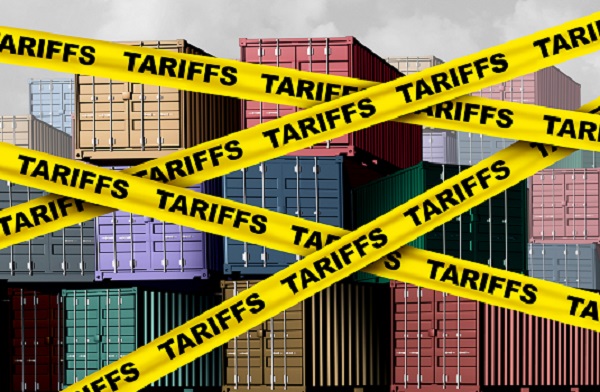.png)

Datametricx is a veteran journalist tallying the macro game, keeping score of the numbers that shape India’s economy and policy.
November 22, 2025 at 8:16 AM IST
The impact of US tariffs on Indian goods has begun to show. India’s merchandise trade deficit widened to a record $41.69 billion in October, up 58.9% from a year earlier. Exports fell 11.8% year-on-year to $34.38 billion, their lowest level in 11 months.
As expected, shipments to the US declined 8.9% to $6.31 billion, but the broader trend was more concerning: exports to 17 of India’s top 20 destinations contracted in October.
Most major export categories, including engineering goods, petroleum products, gems and jewellery, and pharmaceuticals, recorded year-on-year declines of 5-30%. Electronic goods were the lone bright spot, rising 19.1% to $4.08 billion.
Imports surged 16.6% to an all-time high of $76.06 billion. Notably, India’s imports from the US rose 13.9% to $4.46 billion, suggesting that trade tensions have not materially impacted inbound shipments.
Gold continued to distort macro indicators. After fuelling higher core inflation in recent months, it has now driven imports almost single-handedly: gold imports nearly tripled to $14.72 billion, nearly matching crude and petroleum product imports at $14.79 billion.
A services trade surplus of $19.88 billion is expected to partly cushion the merchandise deficit, with services exports estimated at $38.52 billion in October, exceeding merchandise exports by $4.15 billion.
With a “package deal” to resolve reciprocal tariff issues with the US reportedly nearing closure, external trade environment may improve in the coming months.
Private sector growth softened in November as the boost from GST rate cuts and festive demand faded. The HSBC Flash India Manufacturing PMI fell to a nine-month low of 57.4 from 59.2 in October, reflecting the weakest rise in factory output since May. The Flash Services PMI improved to 59.5 from 58.9. The Composite PMI eased to a six-month low of 59.9, down from 60.4, well below August’s record 63.2 but still comfortably above the long-run average of 54.9.
New orders and business activity expanded at their slowest pace since May, with firms citing difficulties in securing new business and the impact of heavy rainfall in parts of the country. International sales rose at the weakest pace since March, hinting at a drag from US-imposed tariffs.
Inflationary pressures eased: input costs rose only marginally — the slowest increase in nearly five-and-a-half years — while output price inflation was the weakest since March.
India’s core infrastructure sectors remained sluggish, with output flat year-on-year in October — the weakest performance in 14 months. The eight core industries, accounting for 40.3% of the Index of Industrial Production, continue to show structural strain.
Crude oil and natural gas production have been declining for several years, and more recently electricity generation and coal production have softened amid lower demand for thermal power. Cement and steel were the only industries to register notable growth, likely supported by sustained government capital expenditure. The weakness in core industries is expected to weigh on October’s industrial production.
Coal production fell 8.5% year-on-year to 77.43 million tonnes in October — the fourth decline in five months — due to lower offtake from thermal power plants. Dispatches dropped 4.8% to 80.44 million tonnes, led by a 5.5% contraction in shipments to the power sector as thermal power generation continued to fall.
Petroleum product consumption edged down 0.4% year-on-year to 20.17 million tonnes in October, dragged down by petroleum coke and high-speed diesel. Petroleum coke consumption contracted 14.1% to 1.75 million tonnes, high-speed diesel fell 0.3% to 7.62 million tonnes, while petrol consumption rose 7.4% to 3.67 million tonnes.
India’s unemployment rate held steady at 5.2% in October. Youth unemployment (15-29 years) eased to 14.9% in October from 15.0%, and urban youth unemployment rate inched down to 18.4% from 18.5%. The labour force participation rate rose to a six-month high of 55.4% in October from 55.3% a month earlier
Food grain production rose to a record 357.73 million tonnes in 2024-25 (July-June), up 7.7% year-on-year and 3.77 million tonnes above the government’s earlier estimate. This marks the highest annual growth in in eight years, supported by above-normal southwest monsoon rainfall.
Both rice and wheat production hit record highs at 150.19 million tonnes (up 9.0%) and 117.95 million tonnes (up 4.1%), respectively.
Pulse output rose 5.9% to 25.68 million tonnes, and oilseeds production increased 8.4% to a record 42.99 million tonnes.
With the country witnessing a second straight above-normal monsoon this year, the prospects for food grain output look promising.
Rainfall eased sharply in November, but the post-monsoon season remains significantly above normal due to heavy October rains. As of November 21, cumulative rainfall stood at 124.0 mm, 27% above the normal of 98.4 mm.
Rabi acreage remains healthy, supported by ample moisture. As of November 11, the area under rabi crops stood at 20.82 million hectares, up 10.3% year-on-year. Pulses acreage rose 8.0% to 5.28 million hectares, oilseeds 5.1% to 6.62 million hectares, and wheat — the key rabi crop — surged 17.1% to 6.62 million hectares.
Reservoir storage have begun to decline as rains recede but remain well above normal. As of November 20, the 161 reservoirs held 161.82 billion cubic metres, or 89% of live capacity — 7% higher than a year earlier and 21% above the 10-year average.
Government grain stocks remain at record highs. Rice stocks in the Central pool stood at 33.59 million tonnes as of November 1, the highest ever for the period. Total rice stocks, including unmilled paddy, reached 54.30 million tonnes, up 23.2% year-on-year. Wheat stocks rose 38% to 30.73 million tonnes. Total grain stocks, including unmilled paddy, stood at 85.03 million tonnes, also a record for the period.
India’s foreign exchange reserves rose $5.5 billion to $692.6 billion as of November 14, the first increase in four weeks, driven largely by higher gold prices. Foreign currency assets rose $152 million to $562.3 billion, while gold reserves rose $5.3 billion to $106.9 billion. Reserves have increased by $24.3 billion so far in 2025-2026.
External commercial borrowings by Indian companies fell to $2.80 billion in September from $4.84 billion a year ago and $3.27 billion in August. Reliance Industries was the largest borrower, with a $500 million loan, followed by Air India ($215 million) and Tata Semiconductor Assembly and Test ($200 million).
Reserve money grew 1.4% year-on-year as of November 14, unchanged from the previous week. Currency in circulation rose 8.1% to ₹38.49 trillion.
Coming up
- Nov 28 – GDP estimates for Jul-Sep
- Nov 28 – Index of Industrial Production for October
- Nov 28 – Government finances for Apr-Oct
- Dec 1 – HSBC India Manufacturing PMI for November
Tailpiece
For the first time in eight years, India’s kharif food grain output slightly exceeds rabi production. Kharif output stood at 169.46 million tonnes, 0.30 million tonnes more than the winter crop.




